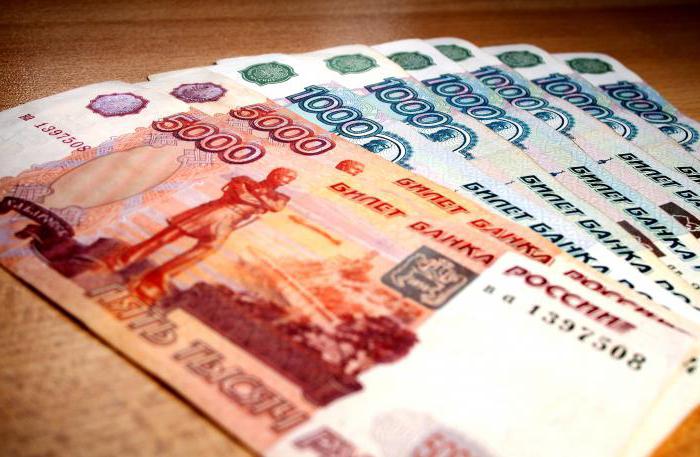Inflation targeting is the only indicator that the Central Bank can influence in the long run. In addition, in order to eliminate unnecessary movements, the regulator is obliged to conduct a predictable and transparent policy, which should have a clearly defined goal. He should be trusted by the population. For the implementation of targeting policies is also important order in the public sphere, especially financial. This is necessary to eliminate the risks of covering government spending by issuing money. In other words, the authorities should be independent, they should not first borrow directly from the Central Bank. The optimal approach is also important in the formation of the state budget.
The concept
Under the definition under study is a set of rules used by the country's leadership when inflation is growing rapidly, and the country's main task is to reduce its growth rate.

Firstly monetary policy of the state forms the level of inflation that must be achieved in the medium term. A set of techniques and tools for implementing monetary policy is also indicated. After launching targeting, regular monitoring of the appropriateness of the measures taken is carried out, if necessary, an adjustment is made.

Targeting Features
Consider what inflation targeting is. Its features are as follows:
- The policy is mainly aimed at keeping prices in the country at the required level. In countries where inflation targeting is carried out, the main task is to reduce inflation and maintain a low level in the long term.
- Indicators that want to achieve power are recorded. And they can differ in comparison with other countries. For example, in Israel, they are trying to keep inflation in the price range, and not seek to achieve one target. In Sweden and Canada, on the contrary, there is an indicator that needs to be achieved. However, it is within the price range. A common characteristic for all countries that apply this policy is to maintain inflation within a certain framework.
- The central bank has the right to independently determine the key rate indicator or some other instrument. It is important that the regulator has all the tools for implementing this policy.
- The policies of central banks should be completely transparent. This is important in order to make inflation targeting predictable. The policy implies clear and simple steps for making decisions in its implementation.
- All central banks that pursue this policy are required to report on its results.
The meaning of politics
As a result, inflation targeting is an absolutely transparent activity of the authorities that pursue a monetary policy. This indicator has more weight and importance in comparison with the inflation target itself. She acts as a kind of beacon, which sends signals about certain steps of power.

What does inflation targeting mean? Everything is extremely simple. The economy as a result of the policy becomes more secure and prepared for any actions by the Central Bank. In addition, uncertainty is eliminated. This, in turn, favorably affects balanced and optimal development.
Bank independence
Often, some banks raise concerns that they will not be able to cope with inflation and lose control over it. In order to avoid this, it is important to fulfill a number of conditions. First of all, the bank must be independent.Not only competent legislative acts are important here, but also a real opportunity to carry out any actions to implement monetary policy or use any of its tools. The main thing is that there is no fiscal advantage - monetary policy should not be subject to and limited to budget policy.

This includes the following steps:
- creation of an extensive income base;
- the absence or minimization of government loans from the Central Bank or commercial banking institutions;
- optimal depth of financial markets.
Monetary policy should not interfere state debt and its dynamics.
Central Bank Inflation Targeting
The policy of the monetary authorities should not affect other indicators, such as wages and foreign exchange rates. This should take into account the state, which maintains a regular exchange rate.

If a floating controlled rate is chosen, then inflation targeting is designed to maximize the investment situation in the country. There will be new opportunities for profit. The fulfillment of these conditions is sufficient to conduct a monetary policy that complies with the principles of targeting. In this case, the following components should be included in its composition:
- the formation of inflation targets for a certain time ahead;
- achieving this goal should be a priority;
- formation of an optimal model of economic development;
- application of clear principles in response to emerging inflation.
This implies that the authorities have the technical and institutional capabilities to create and predict inflation, assess the impact of their steps on it in the future, and other key macroeconomic indicators.
Actions of the Central Bank of the Russian Federation
The inflation targeting policy in Russia occurs by influencing the value of money, i.e., the key rate. The Bank of the Russian Federation directly affects the most short-term monetary market rates, bringing them closer to the level of refinancing. At the same time, the Central Bank management suggests that this influence should be enough for changes in the key rate to affect bank deposit rates, which affect the population’s decisions on saving, consuming, and investing free resources.

And as a result, the inflation rate and the main indicators of economic life. The Central Bank of the Russian Federation sets the key rate indicator so as to achieve the set goals for inflation in the medium term. This is due to the fact that the current monetary policy affects the economy gradually, over a certain period.
The course of inflationary processes
Inflation targeting in Russia stands out for its specificity. First of all, the fact that non-monetary factors causing inflation are of great importance. This includes the high cost of services and products. natural monopolies. As a result, inflation in the Russian Federation is transforming into cost inflation. That is, the increase in the cost of goods and services of enterprises belonging to natural monopolies causes an increase in its level. As a result, rising inflation leads to higher costs in companies, which also forces tariff increases. There is a certain inflationary spiral. Along with this, the “freezing” of tariffs or the postponement of their increase increases the reduction of inflationary processes. The issue of increasing price indicators must be addressed not by freezing them, but by reducing costs in these organizations, by optimally regulating the formation of the value of their products and services.

The conclusion is that, under conditions of significance for the formation of inflation of non-monetary factors, the use of its targeting will not give the desired expected effect. It is important to note that the increase in prices for consumer goods, which is caused by inefficient non-monetary policies, is not taken into account as inflation, which should be regulated by the Central Bank.
Instead of a conclusion
Inflation targeting and its flexible principles support independence from external influences on the economy, while creating the opportunity to achieve the chosen objectives of the current monetary policy. Its implementation gives a positive effect, which is expressed in a slowdown in the growth of prices of the consumer market, in a decrease in its volatility. The principles of these actions make it possible to compare the selected monetary policy regime with the characteristics of the national and global economies, providing the opportunity to achieve the main goal - price stability.

